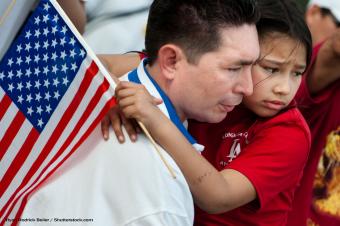Family Reunification
Family Reunification
Recent Activity
Recent Activity
Articles
December 9, 2015
Child migrants traveling alone to Europe or the United States face similar dangers and are particularly at risk of abuse and trafficking. The arrival of tens of thousands of such children in Europe and the United States have overwhelmed accommodations as well as legal and integration processes. Furthermore, the unprecedented flows have sparked heated public debate in a number of cities.
Video
September 30, 2015
Commemorating the 50th anniversary of passage of the Immigration Act of 1965, this symposium focuses on the political and policy dynamics that came together to make the law possible and how it changed the U.S. legal immigration system, the country's demographics, and future.












